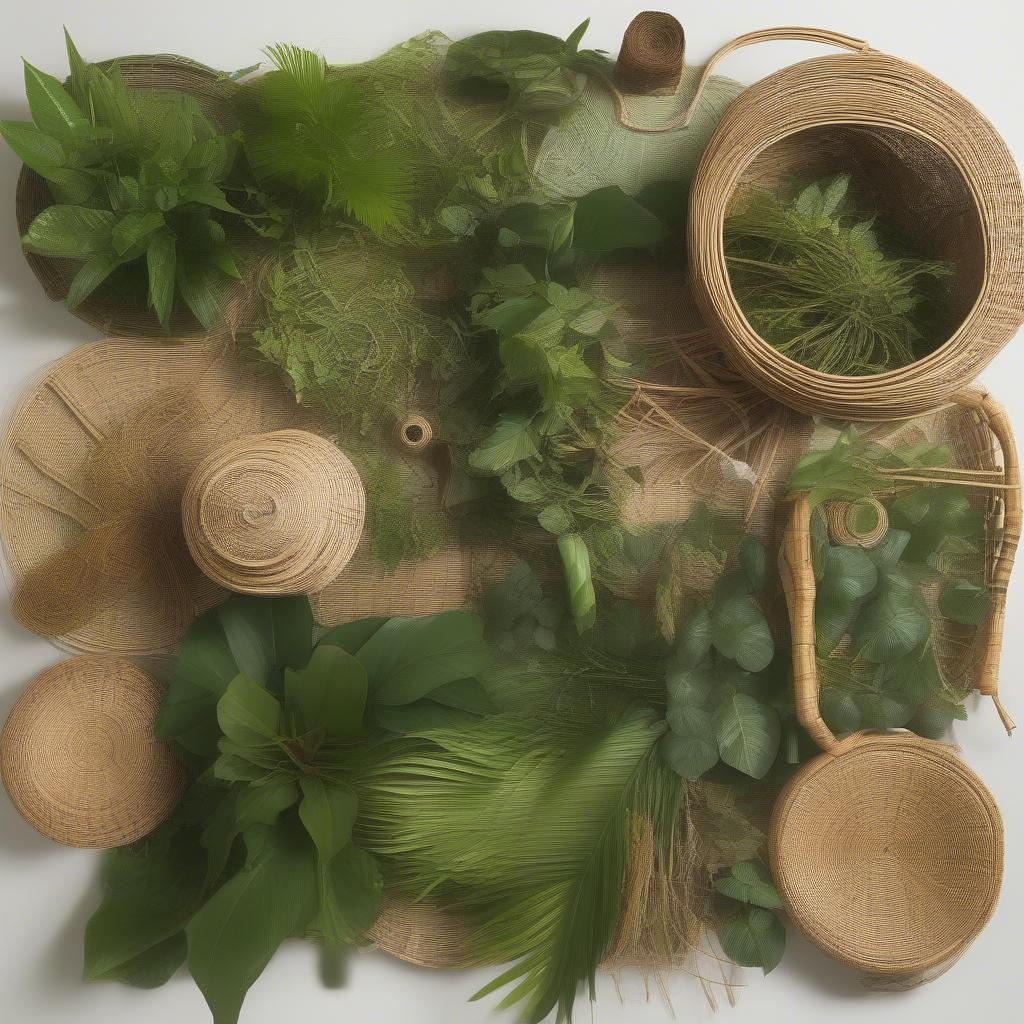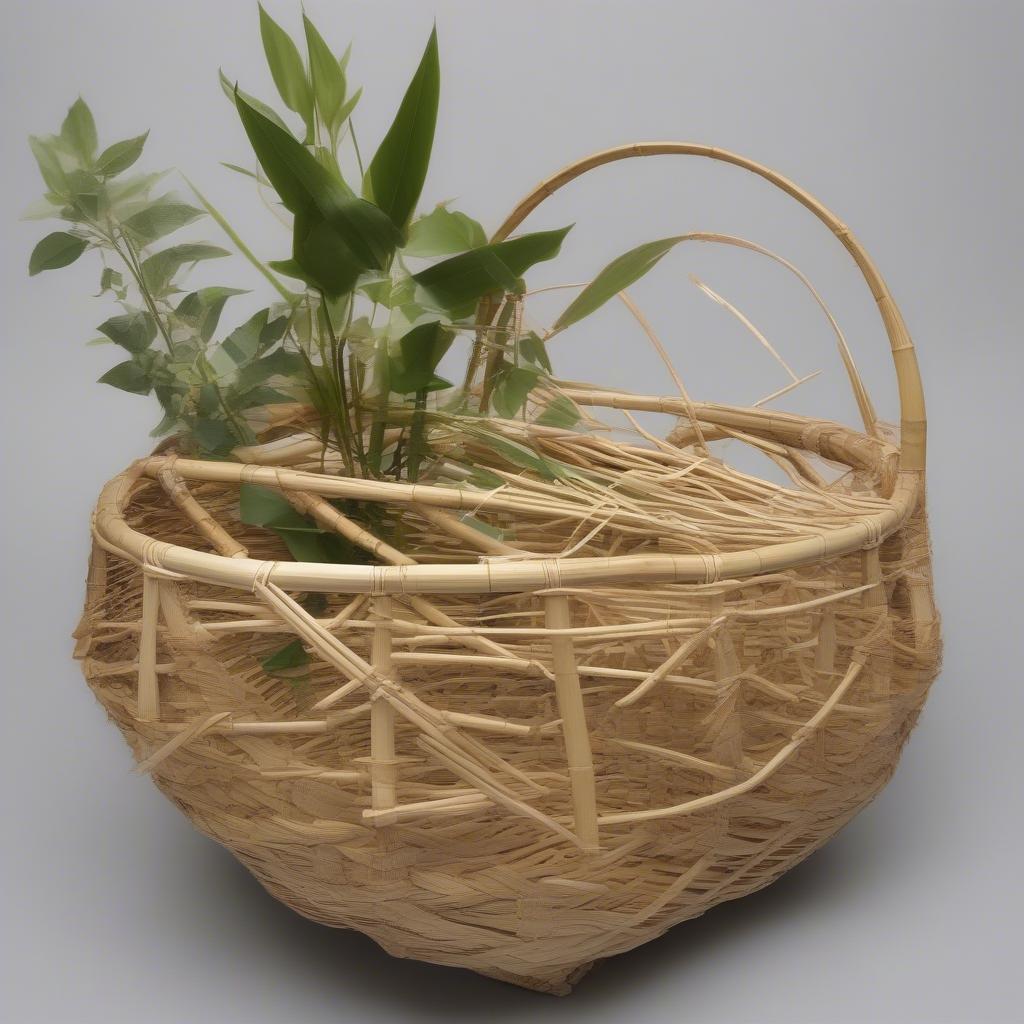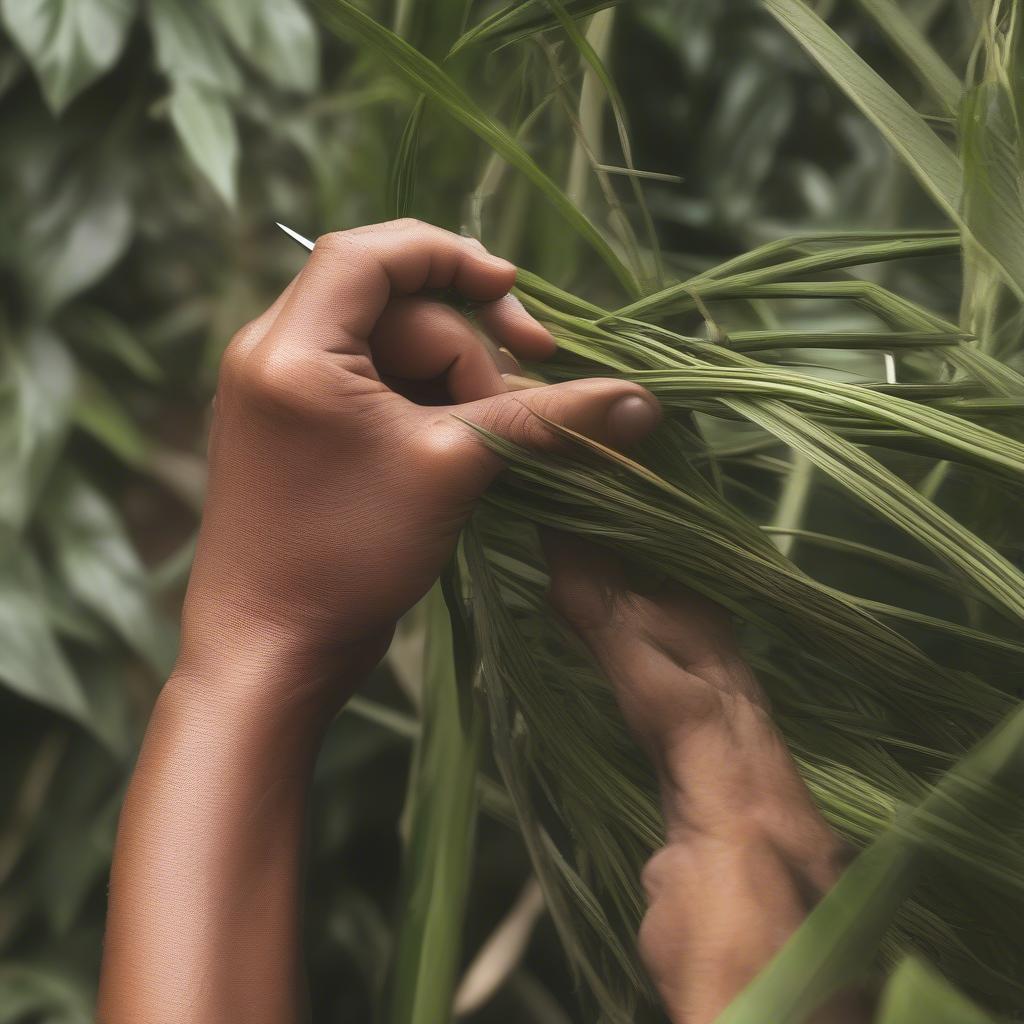Basket Weaving
Discover the Diverse Plants Used for Basket Weaving in the Jungle
The jungle, a vibrant ecosystem teeming with life, provides a wealth of resources, including an array of plants perfect for basket weaving. From flexible vines to sturdy reeds, the jungle offers natural materials for creating beautiful and functional baskets. Let’s explore some of the fascinating plants used for basket weaving in this lush environment.
A Closer Look at Jungle Plants Ideal for Basket Weaving
 Various jungle plants used for basket weaving, including rattan, bamboo, and vines.
Various jungle plants used for basket weaving, including rattan, bamboo, and vines.
Many different types of plants are used for basket weaving in the jungle, each with its own unique properties and characteristics. Rattan, known for its strength and flexibility, is a popular choice. Its long stems can be easily woven into intricate designs. Bamboo, another readily available material, provides a sturdy framework for larger baskets. Various types of vines, grasses, and palm leaves also contribute to the diverse world of jungle basketry. These natural materials not only provide the raw ingredients for crafting baskets but also reflect the rich cultural heritage of the communities that use them. You can discover beautiful weaved baskets for plants to decorate your home.
Rattan: The King of Jungle Basketry
Rattan, a climbing palm native to tropical regions, reigns supreme in the world of jungle basket weaving. Its durability, flexibility, and resistance to splitting make it an ideal material for creating baskets of all shapes and sizes. From small, intricate baskets for gathering berries to large, sturdy containers for carrying heavier loads, rattan provides the versatility needed for diverse basketry applications.
Bamboo: Strength and Structure in Jungle Baskets
 A bamboo frame being used as the foundation for a large jungle woven basket.
A bamboo frame being used as the foundation for a large jungle woven basket.
Bamboo, with its hollow, segmented stalks, provides strength and structure to jungle baskets. It’s often used to create the frame or base of a basket, providing a solid foundation upon which other materials can be woven. The strength of bamboo makes it particularly useful for larger baskets designed to carry heavier items.
Vines, Grasses, and Palm: Adding Detail and Texture
A variety of other plants, including vines, grasses, and palm leaves, play important roles in jungle basket weaving. These materials can be used to add intricate details, create unique textures, and enhance the overall aesthetic appeal of a basket. For instance, thin, flexible vines might be used to create decorative patterns, while broader palm leaves might provide a waterproof lining. Weaved basket for plants are also popular, adding a touch of nature to any home.
Beyond the Basics: Exploring Other Jungle Weaving Materials
While rattan and bamboo are staples in jungle basketry, countless other plants contribute to this rich tradition. From the leaves of the pandanus tree to the bark of certain trees, the jungle offers a vast and diverse palette of weaving materials. Each plant brings its own unique properties to the craft, allowing artisans to create baskets that are both functional and beautiful.
“Jungle basket weaving isn’t simply a craft; it’s an art form passed down through generations, deeply connected to the land and its resources,” says Dr. Anya Sharma, ethnobotanist specializing in Southeast Asian cultures.
The Importance of Sustainable Harvesting
 Sustainable harvesting of rattan in a jungle environment.
Sustainable harvesting of rattan in a jungle environment.
Sustainable harvesting practices are crucial for preserving the jungle ecosystem and ensuring the long-term availability of basket weaving materials. Responsible harvesting techniques, such as selective cutting and replanting, help to minimize the impact on the environment and maintain the delicate balance of the jungle.
“It’s essential to remember that the jungle is a delicate ecosystem. Sustainable harvesting practices are not just a good idea, they are vital for the future of basket weaving and the health of our planet,” adds Dr. Sharma.
Conclusion: The Art of Jungle Basket Weaving
From the flexible rattan to the sturdy bamboo, the jungle provides a diverse array of plants perfectly suited for basket weaving. This ancient craft, deeply rooted in the cultural heritage of jungle communities, utilizes these natural resources to create beautiful, functional baskets. By embracing sustainable harvesting practices, we can ensure that this art form continues to thrive for generations to come. Remember the importance of Plants Used For Basket Weaving In The Jungle.
FAQ
- What are the most common plants used for basket weaving in the jungle? Rattan, bamboo, vines, grasses, and palm leaves are among the most common.
- Why is rattan so popular for basket weaving? Its strength, flexibility, and resistance to splitting make it ideal for creating diverse basket types.
- What is the role of bamboo in jungle basket weaving? Bamboo provides strength and structure, often forming the frame or base of a basket.
- Why is sustainable harvesting important? It preserves the jungle ecosystem and ensures the long-term availability of weaving materials.
- What other plants are used in jungle basketry? The leaves of the pandanus tree, the bark of certain trees, and many other plants contribute to this tradition.
For further assistance, please contact us at Hanoi, Vietnam or Tech Avenue, Suite 12, San Francisco, CA 94105, USA. We have a 24/7 customer service team ready to help.
